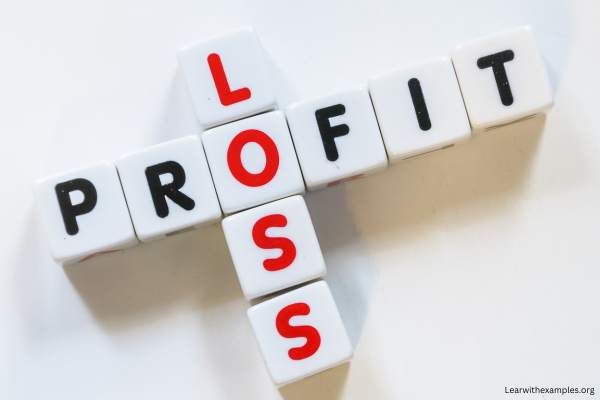Welcome to the fascinating world of business finance, where numbers tell a story about success, growth, and improvement. In this article, we’ll demystify the Profit and Loss (P&L) statement, a powerful tool that reveals the financial health of a business. To make things crystal clear, let’s take a stroll through the finances of a fictional small coffee shop.
The Coffee Haven: A Simple Tale of Income and Expenses
Meet “The Coffee Haven,” a cozy little coffee shop nestled in the heart of a bustling town. This small business serves up hot brews, pastries, and smiles to the community. To grasp the essence of P&L statements, let’s break down the finances of The Coffee Haven.
1. Income: Brewing Success
Monthly Revenue
| Source | Amount ($) |
|---|---|
| Coffee Sales | 5,000 |
| Pastry Sales | 2,000 |
| Merchandise | 500 |
| Total Income | 7,500 |
The Coffee Haven generates income primarily from coffee sales, pastries, and merchandise. The monthly revenue amounts to $7,500.
2. Expenses: The Cost of Brewing
Monthly Expenses
| Expense | Amount ($) |
|---|---|
| Coffee Beans | 1,500 |
| Staff Salaries | 2,500 |
| Rent | 1,000 |
| Utilities | 300 |
| Marketing | 200 |
| Total Expenses | 5,500 |
Expenses at The Coffee Haven include coffee beans, staff salaries, rent, utilities, and marketing, totaling $5,500.
Decoding the P&L Statement
1. Gross Profit
Formula: Gross Profit = Income – Cost of Goods Sold (COGS)
Gross Profit reflects the profitability of the core business activities. For The Coffee Haven:
Gross Profit = $7,500 (Income) – $1,500 (COGS)
Gross Profit = $6,000
Insight: The Coffee Haven is making a healthy profit from its primary offerings.
2. Net Profit
Formula: Net Profit = Gross Profit – Total Expenses
Net Profit goes a step further, considering all expenses:
Net Profit = $6,000 (Gross Profit) – $5,500 (Expenses)
Net Profit = $500
Insight: The Coffee Haven is making a net profit of $500, indicating overall financial health.
Identifying Areas for Improvement
While The Coffee Haven is turning a profit, a closer look at the P&L statement reveals potential areas for improvement:
- Cost of Goods Sold (COGS): With $1,500 spent on coffee beans, exploring bulk discounts or alternative suppliers could increase the gross profit margin.
- Marketing Expenses: Allocating resources to more cost-effective marketing strategies or exploring partnerships might enhance visibility without increasing costs significantly.
Key financial terms used in this example
- Income:
- Definition: Income refers to the money a business earns from its primary activities and additional sources, such as sales of goods, services, or other revenue streams.
- Example (The Coffee Haven): Coffee sales, pastry sales, and merchandise contribute to The Coffee Haven’s total income of $7,500.
- Expenses:
- Definition: Expenses are the costs incurred by a business to operate and generate income. They include various categories such as raw materials, salaries, rent, utilities, and marketing expenses.
- Example (The Coffee Haven): Coffee beans, staff salaries, rent, utilities, and marketing collectively make up the monthly expenses of $5,500.
- Cost of Goods Sold (COGS):
- Definition: COGS represents the direct costs associated with producing or acquiring the goods a business sells. It includes the cost of raw materials and labor directly tied to production.
- Example (The Coffee Haven): The cost of coffee beans, totalling $1,500, is the COGS for The Coffee Haven.
- Gross Profit:
- Definition: Gross profit is the difference between total income and the cost of goods sold. It indicates the profitability of a business’s core operations.
- Example (The Coffee Haven): The Coffee Haven’s gross profit is calculated as $7,500 (income) – $1,500 (COGS) = $6,000.
- Net Profit:
- Definition: Net profit is the final amount after deducting all expenses, including both the cost of goods sold and other operating expenses, from the total income.
- Example (The Coffee Haven): The net profit for The Coffee Haven is calculated as $6,000 (gross profit) – $5,500 (total expenses) = $500.
- Gross Profit Margin:
- Definition: Gross profit margin is the percentage of revenue that exceeds the cost of goods sold. It provides insight into the efficiency of production and pricing strategies.
- Example (The Coffee Haven): The gross profit margin is calculated as (Gross Profit / Total Income) * 100. In this case, it would be ($6,000 / $7,500) * 100 = 80%.
- Net Profit Margin:
- Definition: Net profit margin represents the percentage of revenue that remains as net profit after deducting all expenses. It measures overall profitability.
- Example (The Coffee Haven): The net profit margin is calculated as (Net Profit / Total Income) * 100. In this case, it would be ($500 / $7,500) * 100 = 6.67%.
Understanding these financial terms is crucial for business owners and managers to assess the financial health of their operations, identify areas for improvement, and make informed decisions for sustainable growth.
Conclusion: Sipping Success with P&L Statements
In this simplified example, we’ve uncovered the financial story of The Coffee Haven using a P&L statement. By understanding the nuances of income, expenses, gross profit, and net profit, businesses can pinpoint areas for growth and optimization. So, whether you’re a coffee shop owner or a curious entrepreneur, remember: the P&L statement is your financial compass, guiding you toward the sweet spot of business success.

Reply